Salmon fishing seasons set for 2021-2022 and despite an ever dark cloud hanging over the process, there are some highlights worth getting excited about Leave a reply
By Mark Yuasa
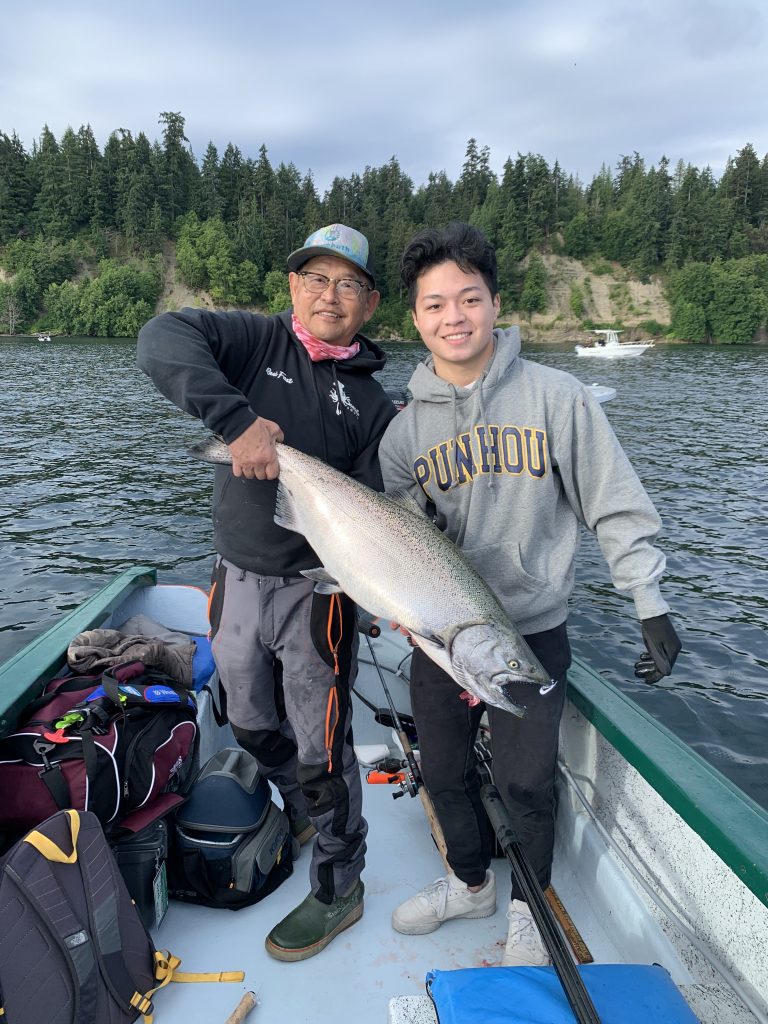
The slicing and dicing of the salmon seasons have turned into a difficult process in recent years as stakeholders vie for their piece of the pie, and this year’s two-month undertaking showed just how hard it has become with ever dwindling salmon returns or issues related to recovery.
Despite a lack of expanding sport salmon fisheries or shifting opportunity gains to other areas of inner-Puget Sound, we will be salmon fishing this summer and fall, as the annual salmon season setting process wrapped up late Thursday evening (April 15) at the Pacific Fishery Management Council meeting that went into “overtime” with joint state, tribal and federal fishery managers.
Some who follow the process closely claim the 2021-2022 sport salmon fishing season package developed by the Washington Department of Fish and Wildlife (WDFW) ended up with an outcome that was discouraging especially in Puget Sound.
“While I’m greatly disappointed with the loss of time on the water in order to get an agreement, I’m thankful to WDFW for listening to the fishing community enough to retain as much time on the water as possible within the conservation objectives and coming to terms with the co-manager,” said Carl Nyman, the president of the Puget Sound Charterboat Association and member of the WDFW Puget Sound sport fishing advisory group.
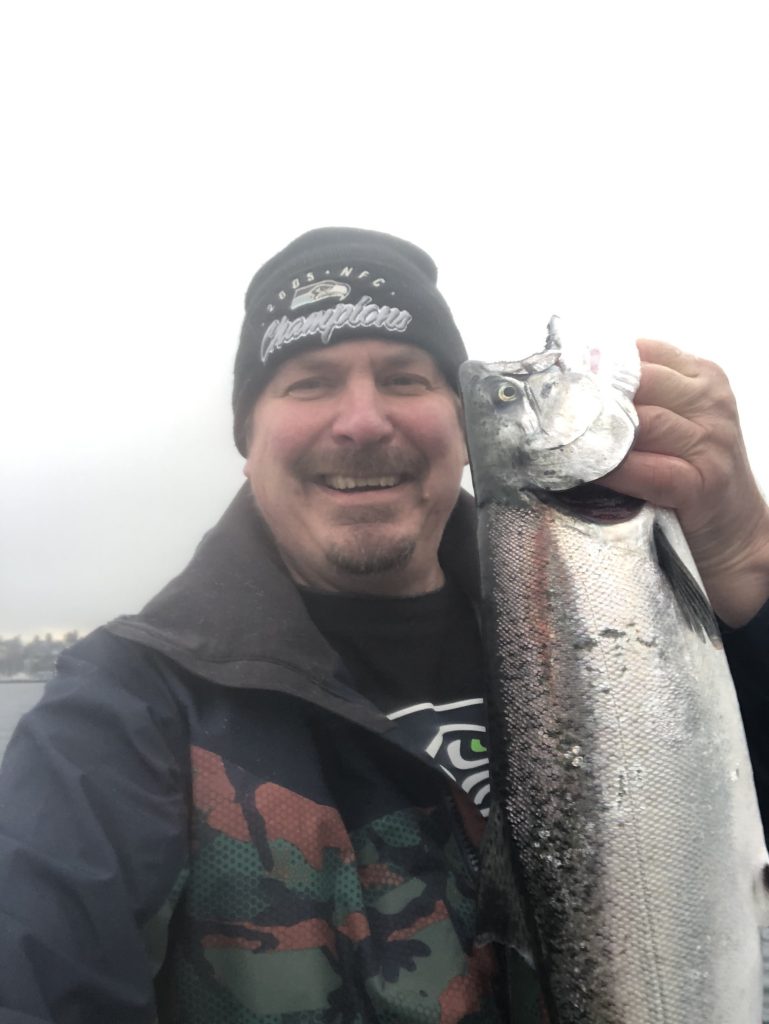
For the second year in a row, there won’t be any winter hatchery chinook fishing occurring in the eastern Strait of Juan de Fuca (Marine Area 6), San Juan Islands (7), east side of Whidbey Island (8-1 and 8-2) and northern Puget Sound (9). It remains one of the most restricted fisheries in history, and the 2020-2021 closures represented a loss of approximately 24 area-months to fishing opportunity compared to 2019.
A few marine locations unaffected once again by the winter closure are the western Strait at Sekiu (5) open March 1 to April 30 in 2022; central Puget Sound (10) open Jan. 1 to March 31 in 2022; and southern Puget Sound (13) open year-round.
As with any fall out the blame points to a myriad of issues like the on-going decline of populations in Stillaguamish, Skagit, Snohomish, mid-Hood Canal and a new fall out this summer/fall are low numbers of southern Puget Sound hatchery chinook stocks as well as Queets wild coho just to name some salmon stocks of concern.
Even more of a concern is problems with polluted watersheds leading to a steep drop of robust habitat; seals and sea lions and other predators gobbling up chinook at an alarming rate; issues associated with southern resident killer whales; disagreements and dragging on the season-setting process until the eleventh hour of negotiations between co-managers; and negative environmental factors such as droughts, flooding and the “Blob” – a large mass of warm water in the Pacific Ocean that killed off large numbers of cold-water sea creatures.
It was by no means an easy walk in the park for the WDFW staff or anyone else involved in this process, and a very tough pill to swallow for sport-fishing constituents as well as many others who worked tirelessly and made gut-wrenching choices.
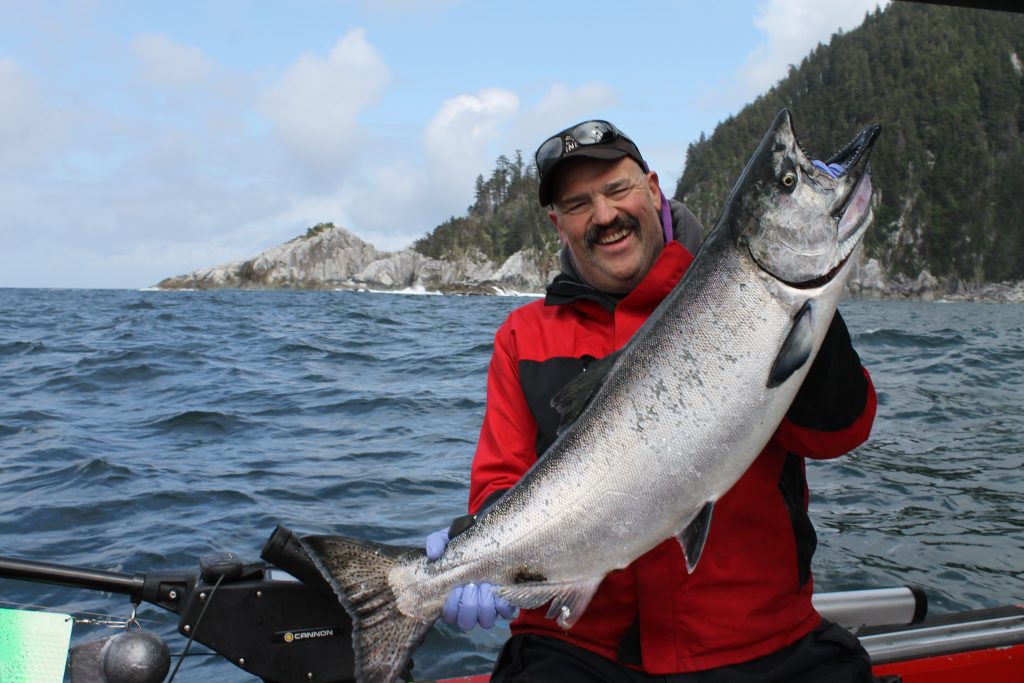
“When you look at total fishing package, it seems like were getting more time on the water with a low chinook abundance (primarily the southern and northern Puget Sound stocks),” said Mark Baltzell, the WDFW salmon manager. “From my perspective it’s not what we want with our fishing package. We had lots of difficult challenges with (some) chinook and coho stocks. I know we have a lot of frustrations where we are now and in the past five or six years. We’ve heard from our constituents that time on the water is a big deal and we’ve focused most of our efforts on getting the maximum time on the water. We do our best to eke out a balance on what is best for the resource and what opportunities we can find for anglers.”
Albeit the little nuggets of highlights this summer will be an early opener starting on June 16 to Sept. 30 for hatchery chinook fishery in south-central Puget Sound (11) located in the Tacoma-Vashon Island region. The June 16-30 chinook catch quota is 431, and the remaining summer quota is 2,656. The summer season fishing time in July could be adjusted to maximize the season into August just in case the quota gets eaten up faster than expected. It will remain open for coho only from Oct. 1-31. New this season is also more time on the water during “winter” from Nov. 1 to Dec. 31 with a quota of 237 hatchery chinook.
Another “saving grace” in 2021 is a whopping forecast of 2,925,681 pink salmon – compared to 608,388 in 2019 – predicted this summer for Puget Sound, Hood Canal and Strait of Juan de Fuca.
While relatively small in size (3 to 5 pounds), pinks are the fastest growing Pacific salmon species and return in bulk during odd-numbered years after spending two years in the ocean before migrating to natal rivers.
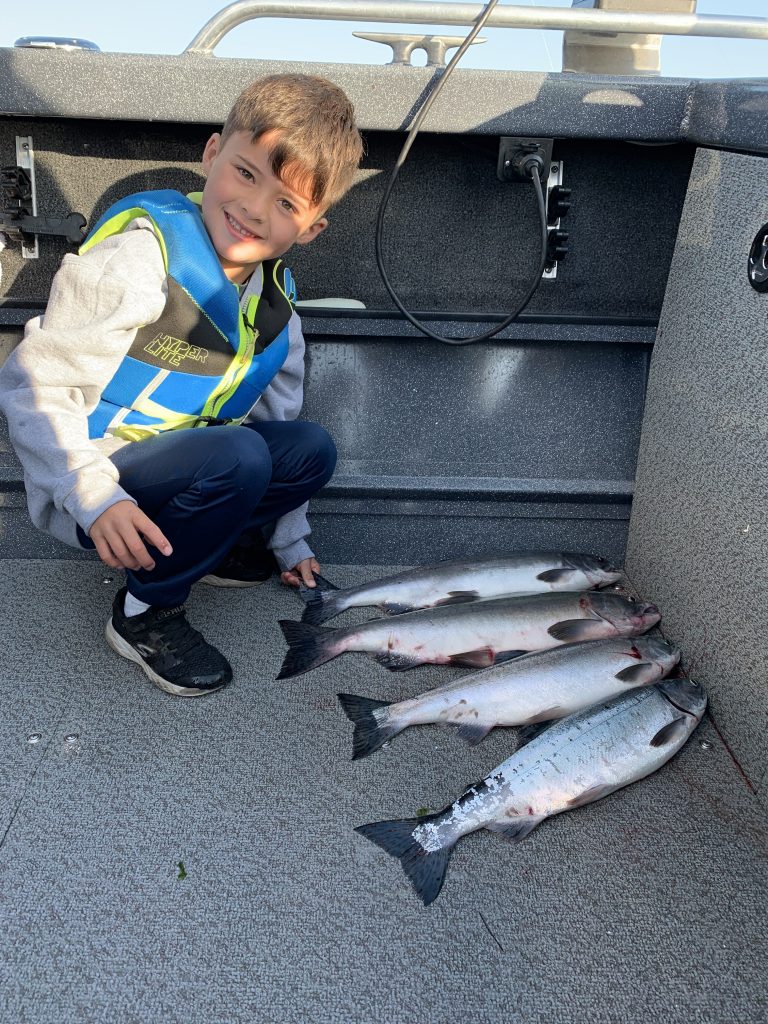
A breakdown by river shows a pink forecast in Nooksack of 240,000 (24,476 in 2019); Skagit, 927,300 (114,769); Stillaguamish, 51,607 (47,929); Snohomish, 555,929 (128,362); Green, 397,732 (141,130); Puyallup, 358,368 (47,905); Nisqually, 184,636 (25,380); South Puget Sound, 142 (143); Hood Canal, 174,244 (70,675); and Strait of Juan de Fuca, 35,723 (7,629).
Anglers should consult the regulation pamphlet website at https://wdfw.wa.gov/, but it appears there will be some bonus daily catch limits for certain rivers expecting large pink returns.
Last year, all of the east side of Whidbey Island (8-1 and 8-2) was closed to salmon fishing, but this summer anglers can pursue pinks and coho. Area 8-1 is open Aug. 1 to Sept. 19 for all coho and pinks only. The southern portion of Area 8-2 south and west of Mukilteo-Clinton boundary line and south to the Area 9 boundary line will be open from Aug. 14 to Sept. 19 for hatchery coho and pinks.
The northern Puget Sound (9) summer hatchery-marked king fishery opens July 16 to Aug. 15 with a catch quota of 4,700 down from 5,600 in 2020. The area remains open from Aug. 16 to Sept. 30 for a fishery directed at hatchery coho and pinks.
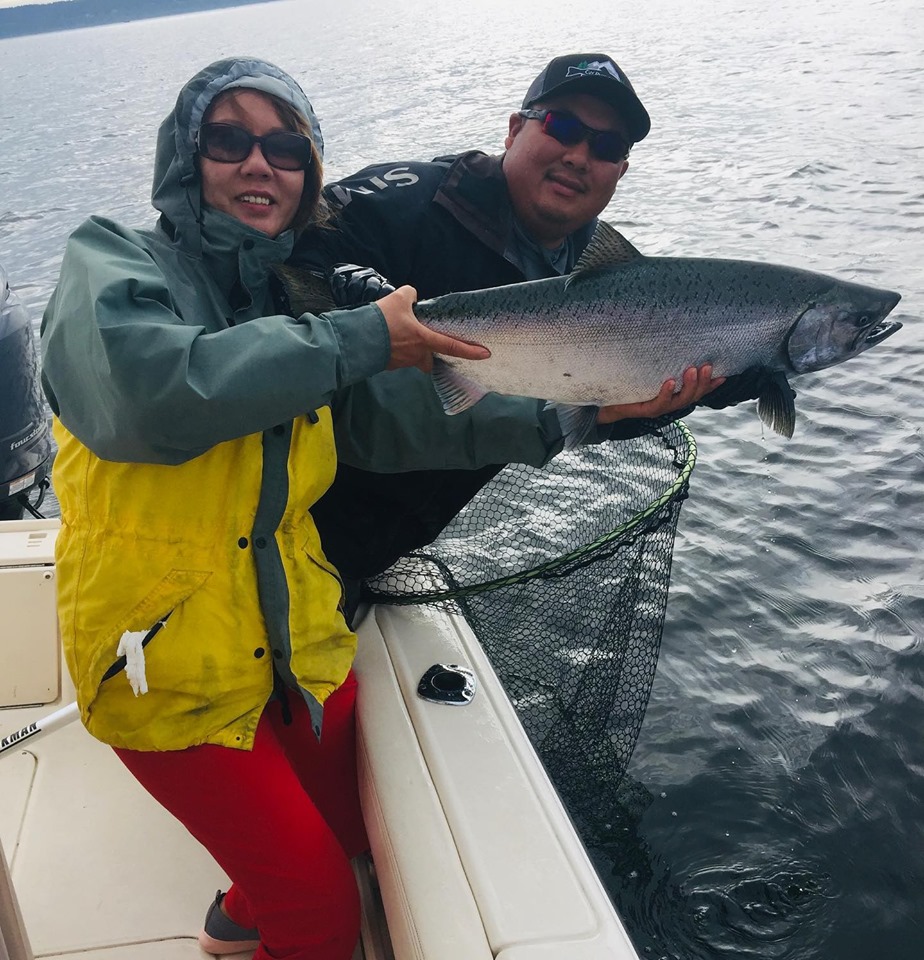
In central Puget Sound (10), the highly popular early resident coho season opens June 16 to July 15 (last year it opened on June 1, and later start time in 2021 is to save on Skagit River wild coho impacts). The hatchery-marked chinook fishery is open from July 16 to Aug. 31 with a catch quota of 3,718 down from 4,100 in 2020. Fishing stays open Sept. 1 to Nov. 15 for coho and pinks and then anglers can add chum beginning on Sept. 16. There will also be a small window of opportunity in inner-Elliott Bay from Aug. 2 to noon on Aug. 5. A winter hatchery chinook fishery will be open in Area 10 from Jan. 1 to March 31 of 2022 with a more conservative catch quota of 836 and 8,459 total encounters.
In San Juan Islands (7) a hatchery king fishery opens July 1-31 with a quota of 1,382 down from 1,562 in 2020. A hatchery coho only directed season is Aug. 1-13 and Sept. 1-30, and then open for hatchery chinook Aug. 16-31 plus pinks and hatchery coho. Bellingham Bay terminal fishery is open Aug. 16 to Sept. 30 with a daily limit of four salmon, and up to two may be a chinook with a 22-inch minimum size limit.
In southern Puget Sound (13) fishing is open year-round for salmon. From July 1 to Sept. 30 the hatchery chinook minimum size limit is 20 inches; release wild coho and chinook. From Oct. 1 to June 30 of 2022 the hatchery chinook minimum size limit is 22 inches; release wild coho and chinook and all chum.
In Strait of Juan de Fuca at Sekiu (5) fishing for hatchery kings is open July 1 to Aug. 15 – with a quota of 4,077 – and then reverts to pinks and hatchery coho from Aug. 16 to Sept. 30. There will also be a hatchery winter chinook fishery from March 1 through April 30 of 2022.
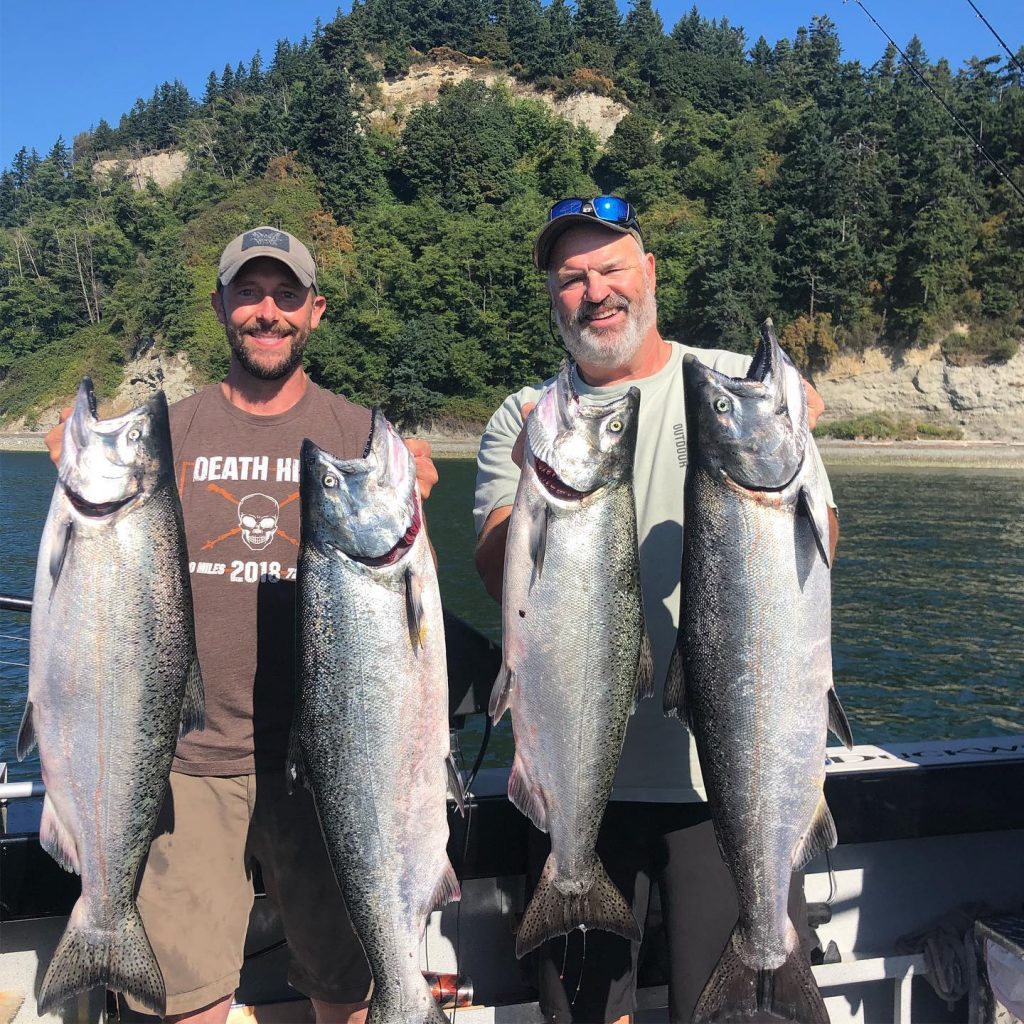
The eastern Strait of Juan de Fuca (6) will be open west of a true line north/south line through #2 Buoy immediately east of Ediz Hook for hatchery chinook from July 1 to Aug. 15 with a quota of 4,769, and then for pinks and hatchery coho only from Aug. 16 to Sept. 30. Chinook must be released east of a line true north/south line through #2 Buoy immediately east of Ediz Hook from July 1 to Aug. 15. Dungeness Bay will be open Oct. 1-31 for hatchery coho only.
Hood Canal south of Ayock Point (12) opens July 1 to Sept. 30 and a minimum size limit of 20 inches, plus release chum. Areas north of Ayock Point are open July 11, but anglers must release all chinook and chum. The entire canal opens Oct. 1 to Nov. 30 for coho and release chum.
There will also be a variety of bubble and terminal fisheries in many areas like Sinclair Inlet in late-summer as well as piers open year-round for shore-bound anglers including the newly built Mukilteo Ferry Landing Pier. The Tulalip Bubble Fishery (8-2) is open for chinook from May 29 to Sept. 7 (fishing allowed Fridays to noon on Mondays only) and Sept. 12-27 (fishing allowed weekends only).
The Puget Sound summer/fall chinook forecast is 231,342 (26,955 are wild); down from 250,692 (28,896) in 2020; 246,837 (29,796) in 2019; and 255,219 (27,404) in 2018.
The Puget Sound total coho return is up with a forecast of 614,948 (245,889 are wild) in 2021 compared to 504,604 (162,709) in 2020; 708,521 (293,980) in 2019; and 557,149 (249,174) in 2018.
Coastal and Columbia River salmon opportunities
The 2021 Columbia fall chinook and coho runs are a huge improvement over the past few years, and they’re the key drivers to what should be a rather decent summer season off the entire coast and Columbia River with room to provide protection for poor runs like the Queets River wild coho.
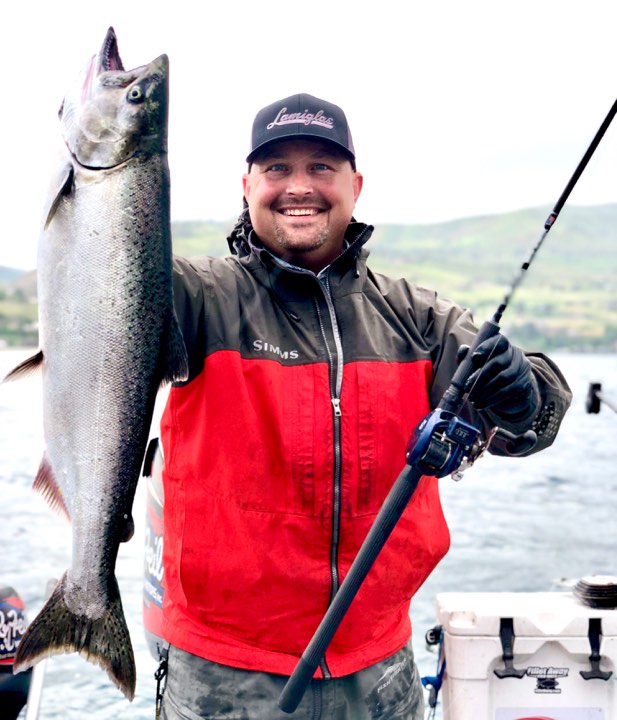
“When the coho season opens, I think we could have a really successful ocean fishery, and even if we aren’t completely accurate with the forecast, it is so high that there will still be a lot of coho around,” said Wendy Beeghley, the head WDFW coastal salmon manager.
This is due to a very robust 1,732,900 coho expected to arrive off the Washington coast compared to a preseason forecast of 268,700 and an actual return of 479,600 in 2020 will likely pave the way for improved fisheries. The Columbia subtotal forecast is 1,590,000 coho compared to a forecast last year of 181,000 and a much larger actual return of 363,600.
Coho are the bread and butter for coastal and Columbia River fisheries, and this could be the largest dating back to at least 2015 when the forecast was 1,015,000 and in 2014 when the forecast was 1,724,000.
You’d have to go back to 2009 to find anything similar when the forecast was 1.2 million coho — actual return was about 1.05 million — and turned out to be a very productive ocean coho fishery season.
“I remember 2009 being a very good coho season, and even when I went out fishing we limited in minutes and I could see it being pretty darn good again,” Beeghley said. “The Columbia River itself could be red hot as this is a great forecast, and one of the highest we’ve seen in many years.”
The ocean sport catch coast-wide quota is 27,250 chinook and 70,000 hatchery-marked coho. The “Total Allowable Catch” for ocean sport and non-tribal fisheries is 58,000 chinook and 75,000 hatchery-marked coho (45,000 chinook and 25,000 hatchery-marked coho in 2020; 27,500 and 159,600 in 2019; and 30,000 and 14,700 in 2018).
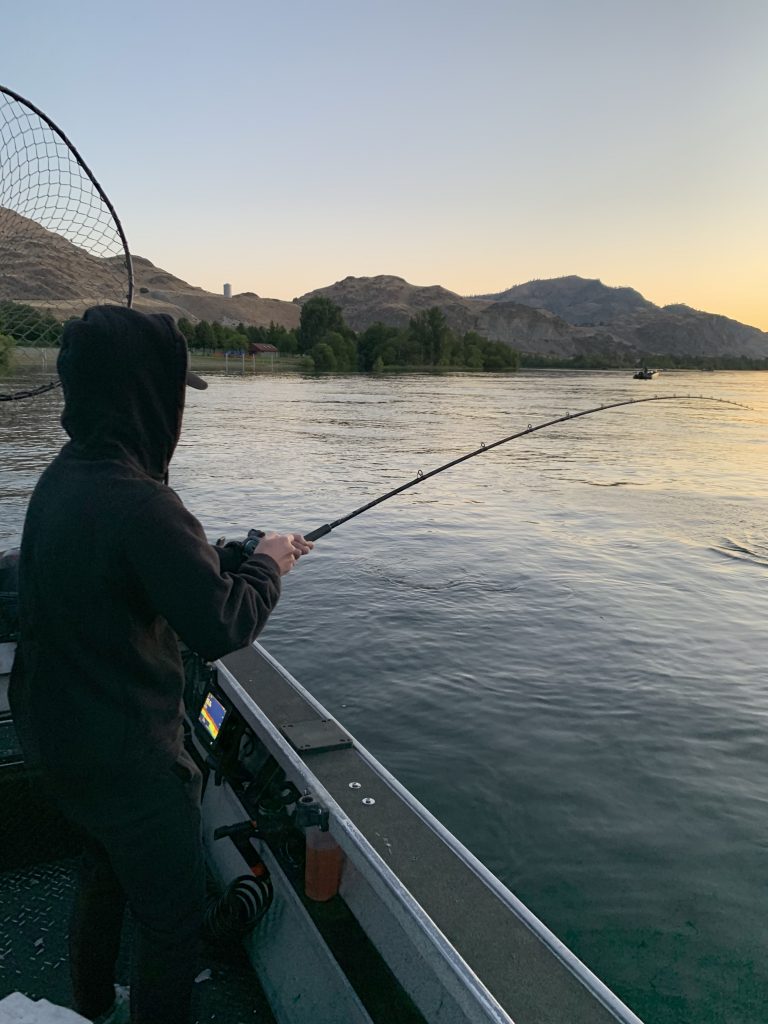
This includes a chinook only fishery start date of June 19 followed by chinook and hatchery coho fisheries opening on June 27 at Westport and Ilwaco or July 4 at Neah Bay and La Push depending on areas through Sept. 15 or until a catch quota/guideline are achieved. The closure date was originally scheduled for Sept. 30 but was cut short to save expected dismal Queets coho returns. NOTE: The Neah Bay marina on the Makah Tribal Reservation is closed through June 30, and the port at La Push is closed through mid-May. This means anglers will likely need to access salmon fishing grounds via Sekiu or Westport if both port closures are extended through the summer months.
The 2021 Columbia fall chinook runs are a nice improvement over the past few years with 580,800 fall upriver bright, tule and lower river chinook expected to return off the Big-C mouth in 2021 compared to a forecast of 431,000 and an actual return of 574,700 in 2020.
The upriver bright chinook return forecast of 354,200 in 2021 (233,400 was forecast and 299,300 was actual return in 2020). The lower river “tule” hatchery chinook (a driver for ocean salmon fisheries) is predicted at 73,100 (51,000 and 77,900).
Those king forecasts will boost sport fisheries in summer from Neah Bay south to Ilwaco and in the Columbia River from Buoy 10 near Astoria to the Gorge area during the August to September time frame.
“What I’m most worried about is that with our quotas and I’m prone to worrying since if catch rates are high then we may have shorter fishing seasons,” Beeghley said. “It won’t take a whole lot of effort to hit our quotas if fishing is this good.”
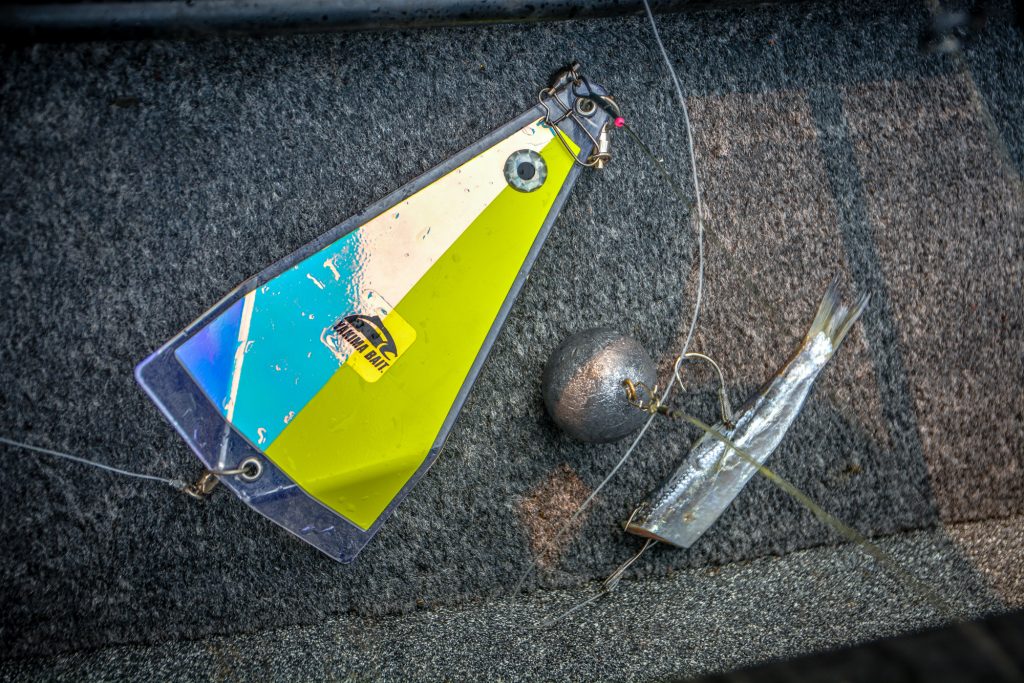
The highly popular Buoy 10 salmon fishery at the Lower Columbia River mouth is scheduled to open Aug. 1-10 for hatchery-marked chinook and coho only, and then from Aug. 11 to Sept. 6 all chinook and hatchery-marked coho may be kept. The expected catch is 80,000 hatchery coho in August and September. For other lower river fishing seasons please consult the WDFW website.
In late August through September, anglers can pursue the salmon runs upstream of Bonneville Dam to the Gorge area, and eventually clear up to the Hanford Reach when September and October rolls around on the calendar.
Salmon fishing seasons for the ocean are as follows:
NEAH BAY: 5,825 chinook and 5,730 hatchery-marked coho (4,700 and 2,340 in 2020). Open daily during June 19 to July 3, one salmon daily limit, except release all coho and chinook minimum size limit is 24 inches. Open daily beginning July 4 through September 15, all salmon, except no chum beginning Aug. 1 with a two salmon daily limit; all coho retained must be hatchery-marked with missing adipose fin. Beginning Aug. 1, chinook non-retention east of the Bonilla-Tatoosh line.
LA PUSH: 1,300 chinook and 1,430 hatchery-marked coho (1,100 and 580 in 2020). Open daily during June 19 to July 3, one salmon daily limit, except release all coho, and chinook minimum size limit is 24 inches. Open daily beginning July 4 through September 15, all salmon, except no chum beginning Aug. 1 with a two salmon daily limit; all coho retained must be hatchery-marked with missing adipose fin.
WESTPORT: 12,925 chinook and 20,440 hatchery-marked coho (10,500 and 8,330 in 2020). Open daily during June 19-26, two salmon daily limit, except release all coho, and chinook minimum size is 22 inches. Open Sundays through Thursdays only from June 27 through September 15 or could close sooner if quota/guideline is achieved. All salmon with a two salmon daily limit and no more than one may be a chinook, chinook minimum size is 22 inches; all coho retained must be hatchery-marked with missing adipose fin.
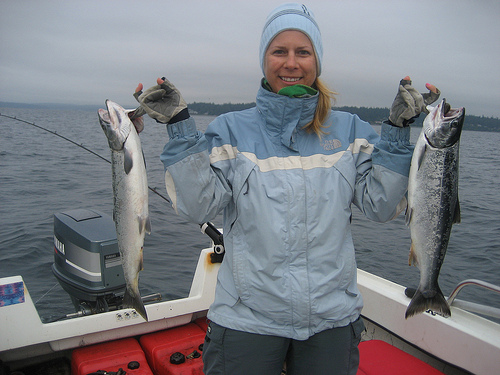
ILWACO: 7,200 chinook and 42,400 hatchery-marked coho (5,800 and 11,250 in 2020). Open daily during June 19-26, two salmon daily limit, except release all coho, and chinook minimum size is 22 inches. Open daily from June 27 through September 15 or could close sooner if quota/guideline is achieved. All salmon with a two salmon daily limit and no more than one may be a chinook, chinook minimum size is 22 inches; all coho retained must be hatchery-marked with missing adipose fin.
Further inland, an expected back-to-back decent years of Upper Columbia adult summer chinook run with a forecast of 77,600 would rank it as the seventh highest return since 1980 and 109 percent of the average return observed over the past decade.
Better known as “June Hogs” they would be comprised of 36,900 four-year-old; 39,900 five-year-old; and 800 six-year-old fish. That’s a good chunk of age four and five fish that’ll likely have anglers jumping for joy in the Chelan Falls-Beebe Bridge area as well as further downstream toward Wells Dam during the month of July.
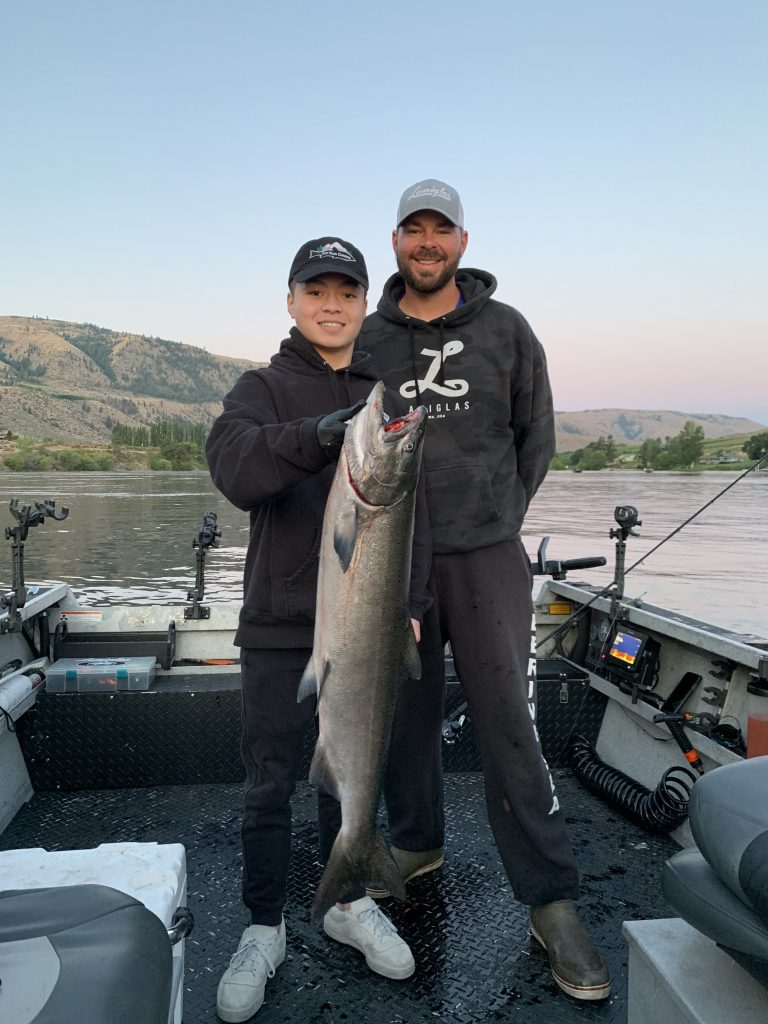
The 2020 summer chinook return was the 12th largest since 1980, totaling 65,494 adults, compared to the preseason forecast of 38,300 adults. The 2020 return was 91 percent of the recent 10-year average (2010–2019) of 71,995 adults. The 2020 adult return was 96 percent of the average of returns observed since 2001, and nearly four times the average return during the years 1980–2000 (17,425 adults).
While a 155,600 forecast for Columbia River adult sockeye, including 27,300 Wenatchee, 127,300 Okanogan and 700 Snake River stocks is rather paltry compared to the actual return last season the hopes are this summer’s runs will also wax expectations leading to another good July fishery in the Brewster area of the Upper Columbia.
The forecast is 50 percent of 2011–2020 average total return of 312,234. The Wenatchee component is forecasted to be greater than the escapement objective but is less than the 10-year average return of 53,835 fish. The return of Okanogan-origin fish is expected to be approximately 49 percent of the recent 10-year average (257,179 fish). A return of 700 fish to the Snake River would be 57 percent of recent 10-year average return.
A comprehensive list of statewide freshwater salmon fisheries was also decided, and will soon be posted along with detailed marine fisheries on the WDFW website at https://wdfw.wa.gov/fishing.

